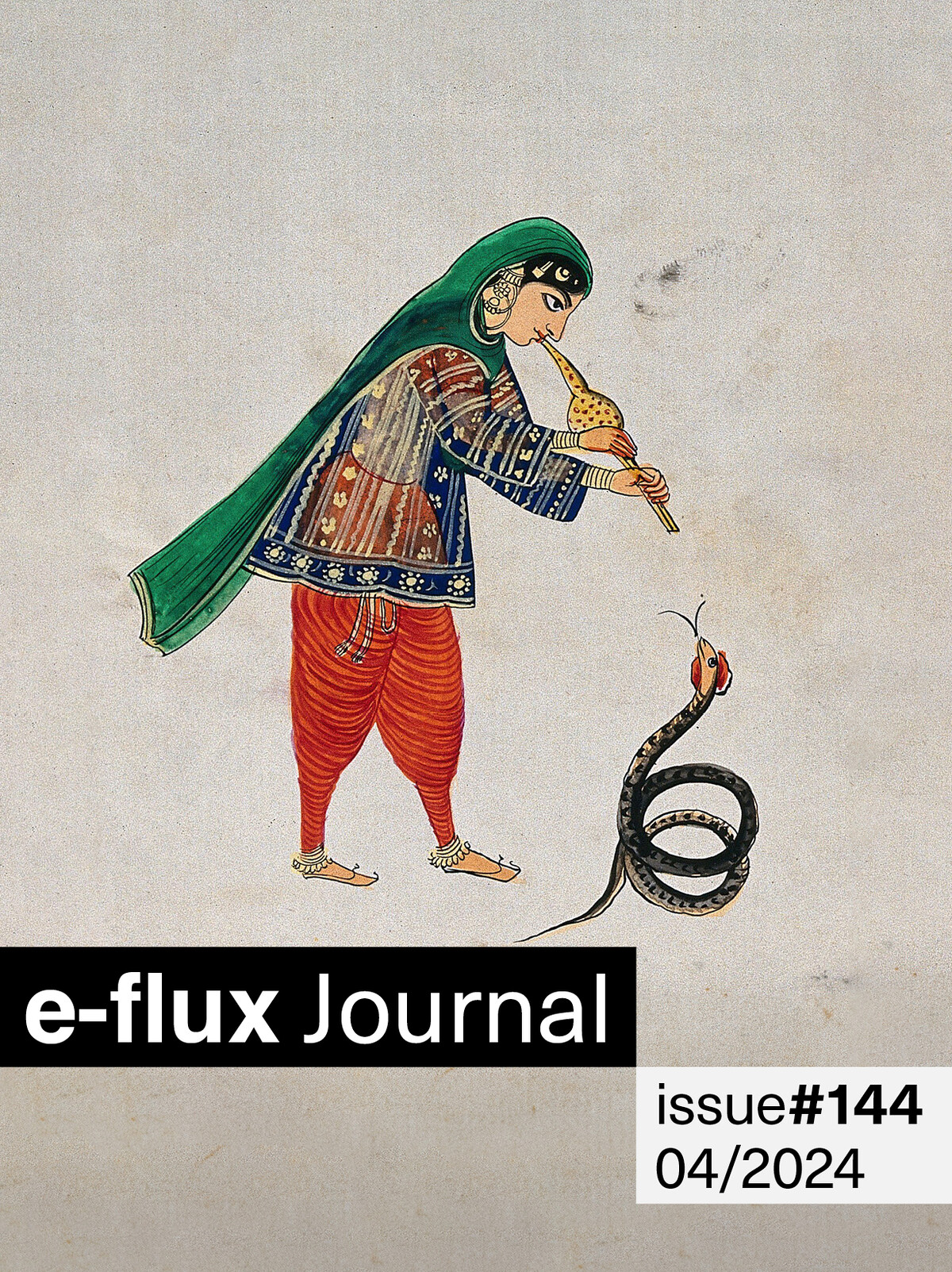How many artists and art practitioners have you met who began in music? Maybe visual art offered them some relief from the rigors of musical scale and tonal structure, a broader material and conceptual palette. But what of those who stayed with musical form and sonic language while also testing its limits? Music’s own wildness takes endless forms, from the modern supernatural of recordings and long-range transmissions over air or wire to the synthetic identities promised by the energy injections of new popular sounds. The strange magical or divinatory interests of experimenters and composers have their own occult physics, automations, locutions. In this vein, we are very excited to work with curator Daniel Muzyczuk on the first in a series of issues retracing the weird and winding paths connecting musical and artistic experiments.
—Editors
Robert Ashley’s libretto for his composition Yes, But Is It Edible? opens this issue of e-flux journal. In the piece, Ashley explains how experimental music in the 1960s tried, through the use of graphic scores, to fold time into space, and how new music is a radical attempt to oppose divisions between disciplines. As an area where different cultural practices meet, music becomes a liminal space where time can be transformed into spatial relations through its own special alchemy. Ashley’s piece is a musical work—a song, even—that is theoretically charged. It is theory performed.
Taking cues from that complex yet highly enjoyable piece, this special issue looks at music as a practice that always involves the outside, but also as a method and process for allowing otherwise unthinkable solutions. Tracing speech patterns was Robert Ashley’s most characteristic method of composing, and each contributor in this issue focuses on relationships between music, the spoken word, and poetry as common features of generating text and sound.
Michał Libera presents Ashley’s operas as magical practices that bridge mnemotechnics with capital relations. As in Yes, But Is It Edible?, these works become theoretical objects: both their structure and their production model offer grounds on which anecdotes can unfold. Here, form and content are integrated.
Speech patterns are also key to prosody (the rhythmic and sonic patterning of poetry), as found in the use of musical measure when poetry is read out loud. Alice Notley speaks to her musical influences and her methods of writing poetry, which involve specific measures and also rely heavily on the ability to reproduce features of speaking with the dead.
Daniel Muzyczuk continues these threads by approaching dictation as a method for both poetry and music that folds together time and space. Multitudinous examples of words and sounds coming from elsewhere crystallize the notion of clairaudience—the perception of what is inaudible as if by hearing.
Kimberly Alidio is a poet who works with ekphrasis, the literary device of describing art in great detail. Her recent book Teeter opens with a series of poems based on experiences of listening to music and poetry. These poems turn into exercises in the elasticity of language. In her essay, Alidio reflects on lyrical practices that are at the root of several languages in the Philippines.
Composer and performer Alessandro Bosetti explores the possibility of remembering music without the aid of words or notation. The writings of Bergson, Borges, and Lucier assist him in this enterprise, which is closely related to Robert Ashley’s theoretical practice.
Ben Vida explores his own compositional work alongside the notion of “narrative spectralism,” a language-based method of generating music. He focuses on the abstract qualities of language in “concrete poetry,” while also reflecting on the musicality of language itself.
Finally, Andrius Arutiunian’s “Synthetic Exercises” is a musical composition that emerges from the place where oil extraction, border politics, and auto-tune technologies meet. A specially designed algorithm activates a sound library and directs a wordless composition for synthetic voices. Arutiunian’s piece connects many of the concerns shared by this issue’s authors and moves them into the realm of relations between AI-generated music and text.
